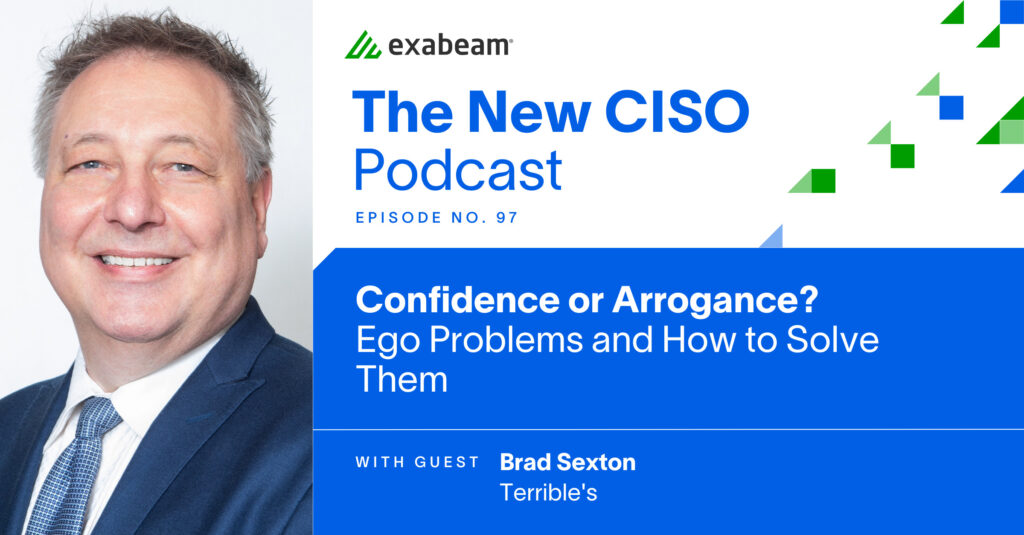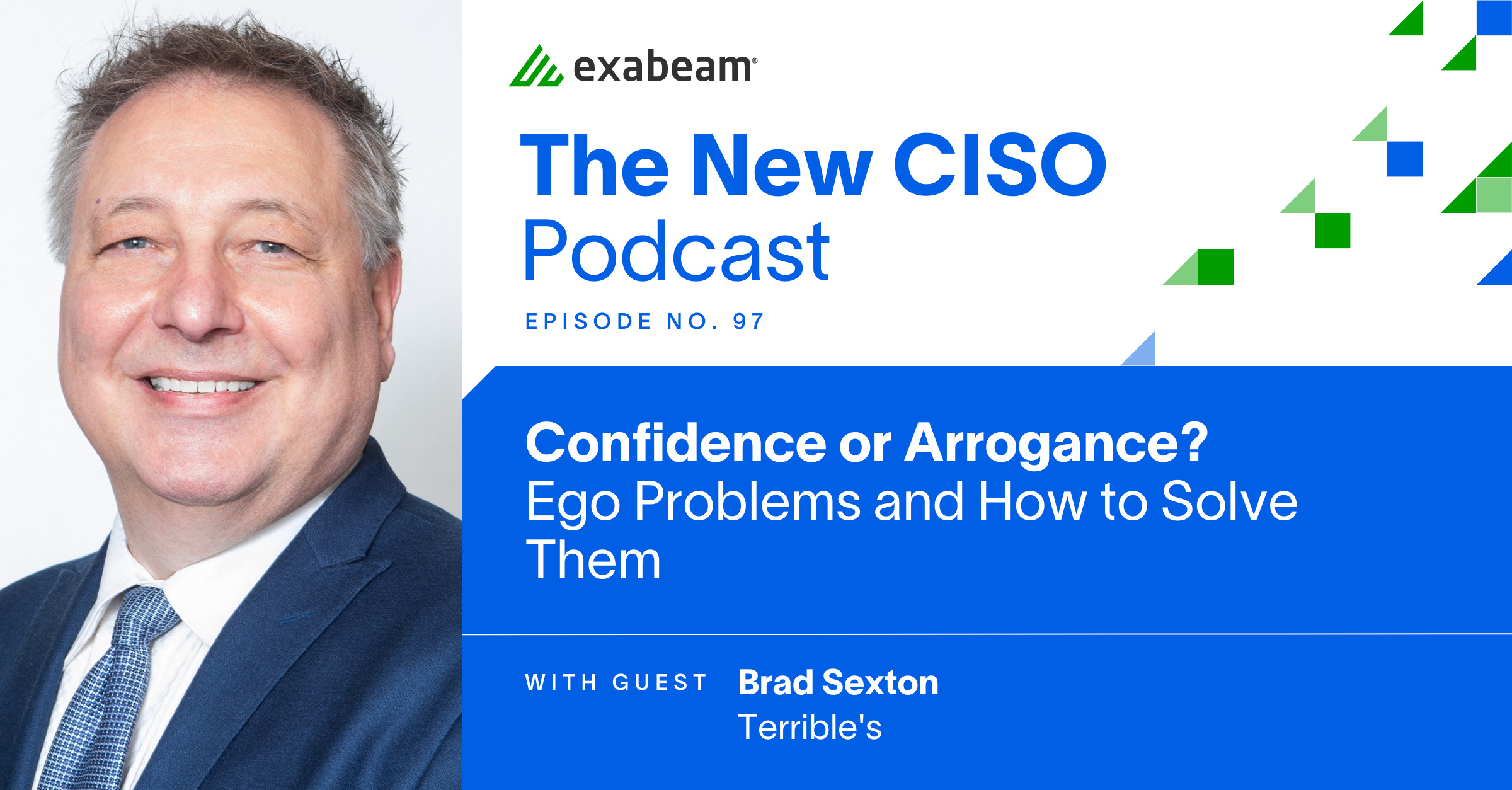In episode 97 of The New CISO Podcast, a captivating conversation with Brad Sexton unfolds, shedding light on his journey as a self-proclaimed “tinkerer” and his remarkable transformation into the Chief Information Officer and Information Security Officer at Terrible’s in Las Vegas. With a trail of achievements spanning from the Las Vegas Metropolitan Police Department to the Wynn Las Vegas, Brad’s tale is one of curiosity, adaptability, and the power of human connections.
In this article:
- From engineering to exploration
- A passion for IT birthed from an old printer
- The power of difficult conversations
- Interview insights: the two-way street
- The importance of relationships for the new CISO
From engineering to exploration
While Brad has made quite an impact on Las Vegas, his path originated far from that bustling landscape. His journey began in the more reserved world of civil engineering, a path his father hoped he would follow. “My dad wanted me to take over the family business,” Brad explains. However, destiny had a different plan, one that led him to a recreation major, which aligned with the youth program he ran for children of military personnel in Europe.
Yet, as fate would have it, Brad’s trajectory veered into the universe of information technology. It was a realization born from his tinkering mind, a fascination with video games, and a penchant for building computers. This newfound direction, embodied in his pursuit of a degree in information systems management, captivated him like nothing else.
“It just absorbed me,” he said, upon discovering his passion for technology. “ I really enjoyed it.”
A passion for IT birthed from an old printer
In an anecdote from his previous life, Brad recalls his role on a military base during the ‘90s, where he ran a youth program akin to “a boys and girls club, helping teach kids.” Amidst the archaic technology of the time, he encountered his colleagues grappling with a stubborn dot matrix printer.
“You literally had to take a floppy disc from any other computer in the office and bring it over to this one and print out whatever you need to print out,” he chuckles.
Even by 20th-century standards, the system was outdated and impractical, and Brad knew there had to be a better way. He reached out to the pre-existing IT team, who had a solution but no time or manpower to execute it. “You can do it yourself if you’re interested,” they told him.
With a challenge laid before him, Brad, a man of action, soon found himself crawling up, over, and through ceiling tiles, laying 10base2 ethernet cables and building a DIY printing network. And while he admittedly “screwed it up a bunch of times,” this is where his passion for IT was born.
The power of difficult conversations
“How do we put people in a position to be successful? To take advantage of their strengths while you help work on their weaknesses?”
Brad poses this question as he chronicles the ups and downs of his career, which highlights “the very fine line between confidence and arrogance” that leaders must navigate. Central to this balance is the creation of a safe space for open and constructive team communication.
Speaking from his own experience, Brad recalls a pivotal moment when a mentor initiated a “difficult conversation” about his conduct. Though the exchange initially created a personal and professional rift, Brad came to realize its profound impact on his personal and professional development. Years later, he expressed gratitude to his former mentor, admitting how his candor was precisely what he needed.
“I said, ‘I really appreciate what you did for me.’” Brad recalls. “‘I wouldn’t have made it past that part of my career. I would’ve been blind to my own deficiencies.’ …It was a blessing for me to be able to have those people around me and to help me grow through that time in my life.”
Interview insights: the two-way street
The interview process, often seen from the perspective of the interviewer, takes on a new dimension through Brad’s insights. He notes that candidates have more power than they realize, transforming interviews into reciprocal interactions. This shift in perspective led Brad to evolve his approach to interviewing.
“I have changed how I ask questions in interviews because now I’m interviewing the organization as well,” he explains. He advises that important questions to ask include: Why is this position open? How is the organization structured? What are the main pain points? Why did you feel the need to fill this role now? Especially when it comes to security, prospective hires should be direct about a company’s information culture and ask probing questions about people, leadership, and the organization’s commitment to IT.
The importance of relationships for the new CISO
A common theme in Steve and Brad’s conversation is the power of professional relationships. In fact, Brad describes them as “critical.” It’s common knowledge that burning bridges is never a good move. Brad jokes that it’s the professional version of cutting off your nose to spite your face. He continues, “My Rolodex that I rely on all the time is filled with individuals that I have met throughout my career. Even to this day, I have a very short list of people that if I ever had the opportunity, here’s my dream team.”
Brad further emphasizes this point when Steve closes the episode with a question he asks every guest: “What does being a new CISO mean to you?”
Brad replies that a CISO will never succeed unless they understand their staff, understand their challenges, and “really get to know them.”
He explains, “One of the first things I did [as the Chief Information Officer and Information Security Officer at Terrible’s] was sit down with all the rest of the executive leadership and just ask them point blank, ‘What’s working? Don’t change it. Don’t break it. What’s not working? Fix it.’”
Simplicity, honesty, and sincerity can be deeply refreshing in the trenches of corporate security, and Brad’s career trajectory is a living example of that.
Confidence or Arrogance? Ego Problems and How to Solve Them
To learn more, listen to the episode or read the transcript.

Similar Posts
Recent Posts
Stay Informed
Subscribe today and we'll send our latest blog posts right to your inbox, so you can stay ahead of the cybercriminals and defend your organization.
See a world-class SIEM solution in action
Most reported breaches involved lost or stolen credentials. How can you keep pace?
Exabeam delivers SOC teams industry-leading analytics, patented anomaly detection, and Smart Timelines to help teams pinpoint the actions that lead to exploits.
Whether you need a SIEM replacement, a legacy SIEM modernization with XDR, Exabeam offers advanced, modular, and cloud-delivered TDIR.
Get a demo today!












